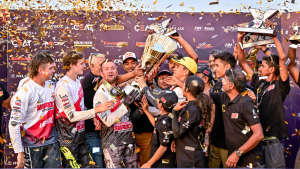24 Hours of Le Mans 2018: The teams and drivers to watch out for
A few years ago, I was sitting at my desk, writing out a preview of what promised to be one of the most exciting editions of the 24 Hours of Le Mans ever. This was back in 2015, when there were four manufacturer teams competing in the big race. Audi was back, determined to defend their Le Mans win, the 13th of which they'd scored the previous year. Toyota was also in the mix, trying hard to score their first Le Mans victory since they returned to the sport in 2012. Porsche was back for the second year in a row, with Mission 2014 not having gone quite according to plan, but still determined to have a go at winning at the Circuit de la Sarthe. And Nissan was finally debuting their Nissan GT-R LM Nismo at the event.
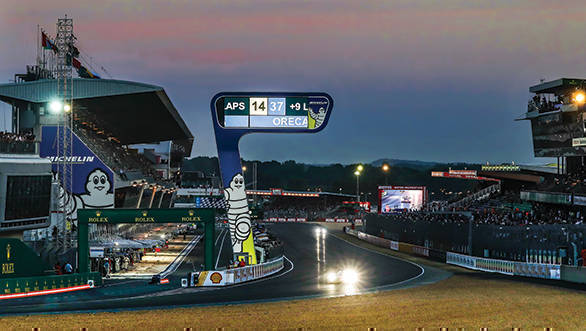
As things would turn out, it was to be a disappointing year for Nissan, who not only did dismally at Le Mans, but, by the end of 2015 decided to abandon their LMP1 project altogether. And on the other hand it was an extremely good year of Porsche. Not only did the team's No.19 car, with Earl Bamber, Nick Tandy and Nico Hülkenberg win Le Mans that year, the team also won the 2015 World Endurance Championship with drivers Mark Webber, Timo Bernhard and Brendon Hartley behind the wheel. It was a terribly exciting time in motorsport, and even just the act of typing out a preview for the 2015 edition of the race, was a bit of a thrill. The many what-ifs that Le Mans was sure to throw up, the uncertainties of endurance racing, the so-close-yet-so-far element that a 24 hour race often brings to the forefront, gave me goosebumps.
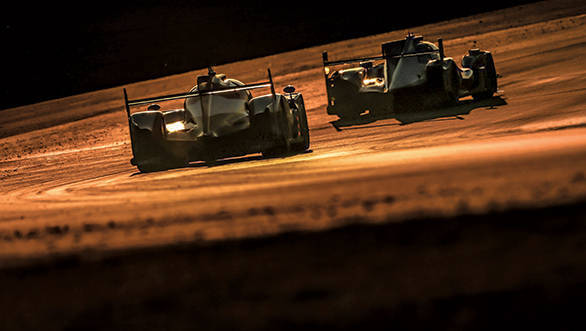
Now, two Le Mans have gone by since then. Audi has left the sport to focus on Formula E, Porsche has left the sport and will soon make their Formula E debut and Nissan seems like they will never return to endurance racing after the ignominious outing of their GT-R LM Nismo, but have already committed to Formula E because that's where everyone is headed now. This means that as we head into the 2018 edition of the 24 Hours of Le Mans, Toyota is the lone manufacturer team in the fray. And they've got plenty of publicity too, because of a certain driver they've managed to get on their roster this year. Perhaps you've heard of a gentleman named
Fernando Alonso
Let's face it, Fernando Alonso is the biggest name at Le Mans this year. In fact, the Formula 1 driver's popularity seems off the charts ever since he decided to go compete in the 2017 edition of the Indy 500 last year. Back then, Alonso said that his focus, after a few bad seasons in Formula 1, was on attempting to win the Triple Crown of Motorsport - victory at the Monaco GP, victory at the Indy 500 and victory at the Le Mans 24. With two Monaco GP wins under his belt already, he's still got to rack up a win at the Old Brickyard and the Circuit de la Sarthe. The Spaniard has got team-mates Kazuki Nakajima and Sebastien Buemi partnering him in the No.8 Toyota TS050 Hybrid this year.
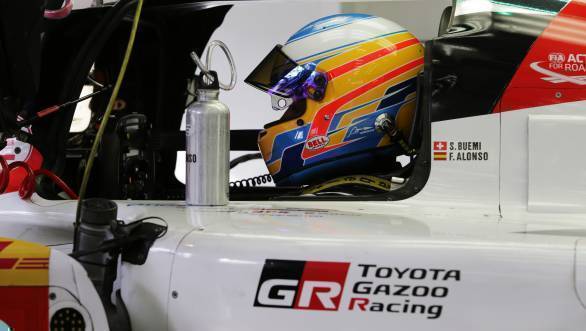 Fernando Alonso joins Sebastien Buemi and Kazuki Nakajima in the No.8 Toyota
Fernando Alonso joins Sebastien Buemi and Kazuki Nakajima in the No.8 Toyota
And they've gotten off to a good start too, with the trio already having won the season-opening round of the 2018/2019 Super Season - the 6 Hours of Spa. Let's not forget, however, that Alonso's win at Spa was only possible because Toyota issued orders that their No.7 car, with Mike Conway behind the wheel at that time, was to hold position behind Alonso (Conway was reportedly lapping around a second and a half faster per lap than the car ahead of him). Conway, with team-mates Kamui Kobayashi and Jose-Maria Lopez, will be hoping that things go very differently at the Le Mans 24 - and now Toyota's gone and vociferously denied that there's any Alonso-favouritism at Le Mans. Meanwhile, Nakajima has taken provisional pole for the No.8 Toyota during Q1. That said, watching the No.7 Toyota win the 24 Hours of Le Mans, now that will be satisfying. Perhaps not as satisfying as seeing one of the privateers win Le Mans, although that might be a stretch. But we will say there's one particular combination that has a pretty good shot at it and that's
Andre Lotterer and Rebellion
Andre Lotterer is one of the most accomplished racers at this edition of the 24 Hours of Le Mans. With Audi Sport Team Joest, and race engineer Leena Gade at the helm, Lotterer, with team-mates Marcel Fassler and Benoit Treluyer, has won the race at Sarthe three times. Lotterer's other accomplishments include two Super GT titles and one Formula Nippon title. Although his 2017/2018 season with Techeetah in Formula E has gotten off to a mixed start, Lotterer's Le Mans experience might just come in handy and turn his season of racing around. Partnering Lotterer in the Rebellion R13-Gibson, is Neel Jani (who won Le Mans with Porsche in 2016) and Bruno Senna.

The one drawback that the privateer teams will face is the penalty that the ACO (Automobile Club de l'Ouest), the organiser of Le Mans, plans on imposing on privateer teams that outpace the lone factory team. Apparently the penalty will ensure a balance between the non-hybrid privateer team and the hybrid Toyota team. See box for more details.
Jenson Button and SMP Racing
2009 Formula 1 Champion Jenson Button's decision to compete in the 2018 Le Mans 24 was something of a surprise. Button has signed up with SMP Racing, and will drive one of the team's two BR Engineering BR1-AERs, with team-mates Vitaly Petrov and Mikhail Aleshin. The team's other car will be piloted by Stephane Sarrazin, Matevos Isaakyan and Egor Orudzhev. Back to Button, though. Button has announced that he will not only compete at Le Mans, but will be part of the team all through the 2018/2019 WEC Super Season, that will conclude with the 2019 edition of the 24 Hours of Le Mans.

Like the other privateers on the grid, Button and Co. will be saddled by the rule that penalises privateers that do better than the factory Toyota team. The one thing that we can still hope for, however, is that the unpredictable nature of Le Mans will play a part in deciding the winner. After all, the Toyota team really did think they were going to win Le Mans in 2016 until their leading car, with Kazuki Nakajima behind the wheel, ground to a halt on the final lap, and was overtaken by the Jani in the Porsche. Never say never, is an old adage with good reason. At the time of publishing this, Sarrazin's SMP machine was the first of the non-hybrid teams in Q1.
Competitive LMP2 grid
While there might be 10 LMP1 machines competing in Le Mans this year, the LMP2 grid boasts a field that's twice as large. In addition to the seven cars competing in the entire World Endurance Championship Super Season, there are 13 more cars that will take the start at Le Mans, which is a pretty decent number, especially when you take into consideration the fact that last year's WEC class winner, Rebellion, has moved up to LMP1, along with the Manor squad. Jackie Chan's DC Racing outfit, who won their class last year in what was only their second ever attempt at Le Mans, will return this year (this time with four cars), and attempt to defend their win. Let's not forget, they were also second and third overall, behind only the winning Porsche last year.
But there's more - perhaps the biggest name to make a Le Mans debut in the LMP2 field is that of Juan Pablo Montoya, who will compete for the the United Autosports team this year. But there are plenty of other prominent drivers in the LMP2 class too, with the likes of Filipe Albuquerque, Paul di Resta, Loic Duval, Jean-Eric Vergne, Pastor Maldonado, Giedo van der Garde, and Felipe Nasr all part of the grid. The LMP2 class often provides interesting battles up and down the grid, and given the prolific list of drivers, we're hoping that we'll be in for something of a treat.
Go like hell?
That subhead was really just sitting there, waiting to be used, wasn't it? Okay, perhaps the Ford versus Ferrari battles that we've witnessed in recent times isn't as iconic as the battles that took place back in the 1960s, that AJ Baime detailed so beautifully in his book (for those of you who didn't get it, it was called Go Like Hell: Ford, Ferrari and their battle for speed and glory at Le Mans).
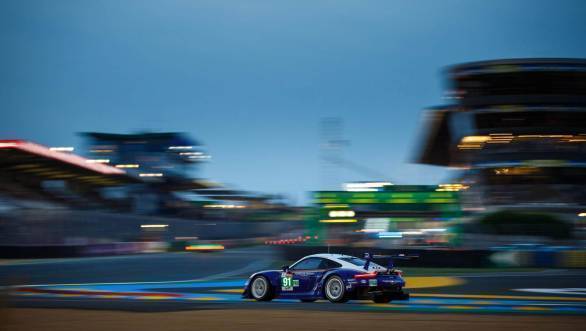 Fastest time in the GTE Pro class at the first qualifying session at the 2018 Le Mans 24 has gone to the No.91 911 with Gianmaria Bruni at the wheel
Fastest time in the GTE Pro class at the first qualifying session at the 2018 Le Mans 24 has gone to the No.91 911 with Gianmaria Bruni at the wheel
But the GTE Pro class is still likely to turn out some interesting fights. Ford is bringing in four GTs, while Ferrari will bring in three 488 GTE Evos. Two Corvettes, two Porsche 911 RSRs, and two Aston Martin Vantage AMRs will also be present, with the last of the group determined to defend their 2017 class win. Making their return to the category is BMW, with BMW Team MTEK fielding two M8 GTEs in the championship. In the GTE Am class, 13 cars will fight it out for top honours, with Ferrari and Porsche making up most of the grid, with only two Aston Martin Vantages joining the grid.
| Rule School With only one factory team in the LMP1 class, more privateer teams have come flocking back into the category than ever before. The main difference between the privateer teams and the factory Toyotas, of course, is that the privateers run non-hybrid prototype machines, while the factory team runs a hybrid prototype. The ACO, in a bid to ensure that there is a balance between the two, has decided to issue penalties within the LMP1 class, should the privateers outdo the factory Toyota TS050 Hybrids. Now, in order to ensure that there is some amount of equality between the non-hybrids and the hybrids, a scale called the Equivalence of Technology has been formulated, based on data given to the ACO by the manufacturers - Ginetta, Dallara and ORECA. Should the non-hybrids prove to be faster than the hybrids, the ACO will penalise the non-hybrids, because they believe that it is an indication of the fact that they have not been provided accurate data by the manufacturer. The penalty system, the ACO says, will be such that it will not disrupt the racing, and will include a five-minute stop-go penalty or a one-lap penalty that will be awarded at the end of the race. After Le Mans, however, EoT might be modified based on the data collected from the first two rounds of the 2018 WEC. The ACO has also stated that should the privateers end up significantly slower than the factory Toyotas, they will not be given any performance boosts or allowances. The Toyota, however, has had its fuel allocation reduced, which reduces the length of each stint the drivers will be able to drive. The factory Toyotas now have a fuel allocation of 35.1kg, while the privateers will be allowed a fuel allocation of 52.9kg per stint. There! And you thought the concept of BoP was complicated! |
Did you know:
|
The tradition of spraying champagne on the podium at motorsport events began after Dan Gurney, who had just won the 1967 edition of the race with team-mate AJ Foyt, decided to have a go pouring the fizzy stuff over Henry Ford II, team owner Caroll Shelby, and a bunch of journalists who didn't believe that they ?could win that year. |
| From the time the race was first held, in 1923, till 1963, the Le Mans start was employed. This involved drivers lining up across from their cars, sprinting to their machines, getting in, and driving off, when the race was started. However, for safety reasons, the switch to qualifying times determining the grid positions, was made. |
| The cars get off to a rolling start at Le Mans, with the waving of the French tricolore indicating that the race has begun. Around the same time, it is customary to have fighter jets in the sky that that leave blue and red contrails behind them. |
| Among the many bizarre ?upsets that have occurred at Le Mans, the manner in which the Ford team's leading car lost the race in 1966 was most unusual. Back then, the car that covered the most distance was declared the winner of the race. When Ken Miles and Bruce McLaren, who had crossed the finish line in 1-2 for the Ford team, with Miles slightly ahead of McLaren, slowed down for a photo op, there was a gap of merely 8 metres between them. Given that McLaren and his team-mate Chris Amon had actually started much further down the grid, it meant that they had in fact covered more race distance than the leading car of Miles and Denny Hulme, handing them the win instead. |
| Since its inception in 1923, ?the Le Mans 24 has only been cancelled 10 times. Once in 1936 during The Great Depression. And between 1940 and 1948, due to World War II. |
Starts Rs 2.12 Crore
3799cc
Automatic
570
637
-NA-
Starts Rs 1.38 Crore
2998cc
Automatic
350
530
-NA-
Related Stories
Top Stories
Latest Videos
Most Popular
- Upcoming Mahindra XUV 3XO: All you need to know
- New Suzuki Swift spotted testing
- Budget Sportbike Showdown: Kawasaki Ninja 500 vs Aprilia RS 457 vs Yamaha YZF-R3
- Nissan Magnite EZ-Shift review - is the AMT any good?
- 2024 Hyundai Creta vs Toyota Urban Cruiser Hyryder vs Skoda Kushaq comparison review - the hype is real?

